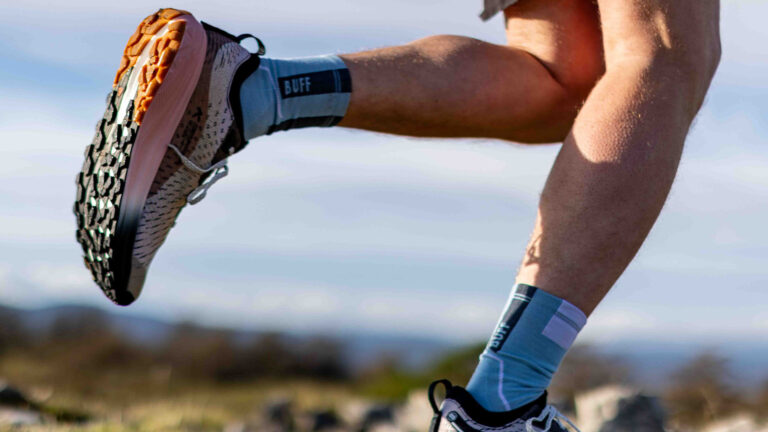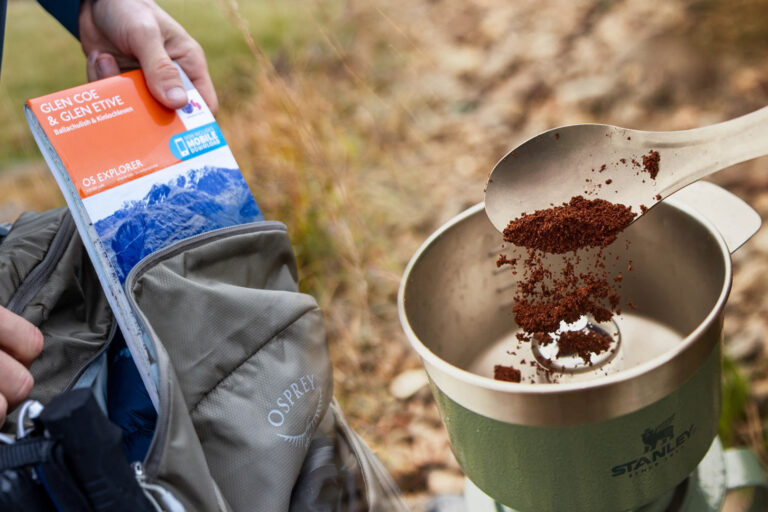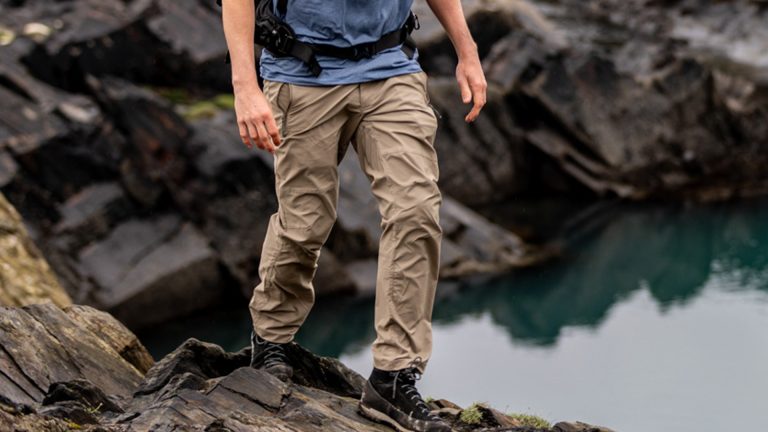Trail running shoes seem to be everywhere these days, they’re coming at you from two
different directions. First traditional outdoor footwear brands like
Scarpa and Brasher have spotted and opening in the market and moved
into the lightweight shoe side of things.
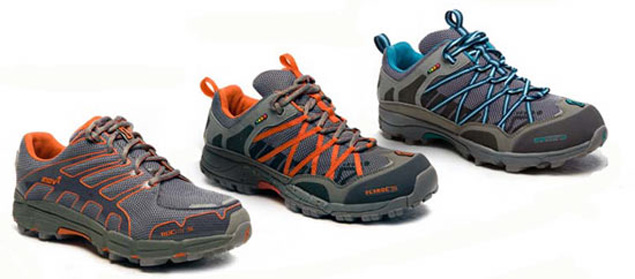
Then on the other side, running brands like Salomon and Adidas have
come into things from the opposite direction using their running
expertise
to produce shoes designed specifically for running on trails.
Finally, Inov8 – a small UK brand – specialises in trail-running shoes
and has its own unique take on design and construction based on
allowing the foot to work as naturally as possible.
We’re not talking about full-on, minimalist fell shoes here, more the
sort of
footwear designed to be used for running on off-road footpaths and
bridleways, anything from hardpack fireroad through to rocky tracks
Pretty much the paths you’d normally walk in fact.
It’s not just runners who should be looking at trail running shoes,
they also make decent ultra-lightweight walking footwear that saves
energy and adds agility over long days in the hills. Or short ones for
that matter.
The Basics
Trail-running shoes are a compromise between cushioned but
over-tall road shoes, that tend to be unstable off road, and ultra-low,
but minimally-padded fell shoes, which have very little cushioning, but
keep your foot close to the ground for maximum stability.
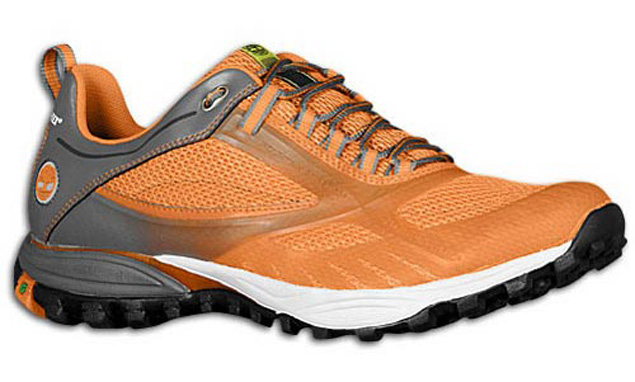
The ideal trail-runner has enough mid-sole cushioning for comfort, but
is still low enough for stability on uneven ground – think not platform
soles – has good grip on both rock and softer ground, good longitudinal
flexibility combined with lateral stiffness and a close-fitting upper
with some protection from abrasion on strategic areas like the rand and
toe.
Finally you may also want a waterproof / breathable membrane to keep
winter puddles at bay, though for summer use, a mesh upper may be
better.
Sole Unit
What you’re after in outsole terms, is enough tread to
grip well
on soft ground – look for pronounced cleats with decent depth and space
between them to help shed mud – combined with rubber that’s soft enough
to grip on rock and harder surfaces. A quick dig of the thumb nail will
give you some idea. Shallow tread will be fine on hardpack, but not so
clever on soft, steep slopes.

The mid-sole unit is generally made from EVA foam and provides
cushioning as well as contributing to stability. Be wary of thick
mid-soles, they make it harder to balance on rough terrain, you want
your feet close to the ground. Look for sole units that have different
densities of EVA at different points in the shoe to keep your foot
strike even – often manufacturers will use a different coloured foam to
emphasise this. [Eg: Hi Tec, Carn]
Finally, some brands use cunning technology that you may not be able to
see to improve cushioning and / or stability. Some work well, some seem
more gimmicky. [Adidas?]
Chassis
The bit of the sole unit you usually can’t see, is some
sort of
internal stiffening plate. Sometimes it’s actually been styled so the
edges of the plate stick out for the sole unit, but its main point is
to allow end to end flexibility but give lateral stiffness to the shoe.
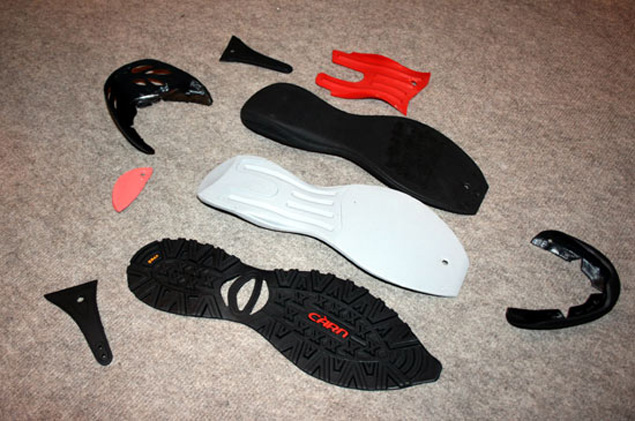
This helps with stability on rough ground in particular and, in some
cases, like Inov8’s range, can actually help to improve energy transfer
on foot strike and toe off.
Uppers
Virtually all trail shoes use a fabric, often mesh, upper.
With
road shoes, abrasion isn’t a factor, but off road, there are plenty of
rocks and rubble zones to run through, so ideally you want some sort of
added protection at the toe of the shoe and ideally right the way round
in rand form to preserve the uppers. At the other end, look for a
stiffened heel cup which is essential for stability as it helps hold
your heel in place.
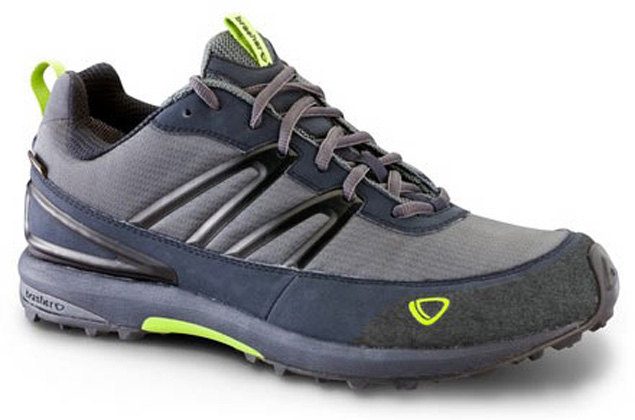
You may also find external plastic moulding designed to work with the
lacing system to hold your foot firmly in place. A combination of
these, a good, slick lacing system and a close, but not tight, fit will
stop your feet swimming about on rough terrain which in turn improve
stability and balance.
Buying
As always, we’d suggest using a well-stocked specialist
shop
where you can try lots of different brands and get expert advice from
experienced staff. Shop in the afternoon when your feet will have
swollen by up to half a size and try different brands as they all have
subtly different fits. You’re looking for one that suits your foot
shape best.
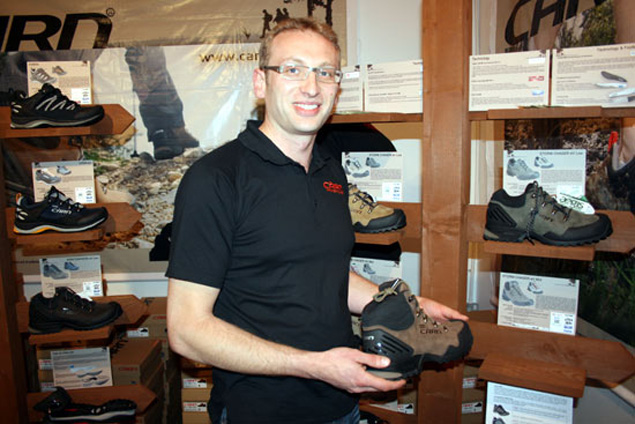
We’d go for a snug but not tight fit. Make sure your toes don’t slide
into the front of the shoe on steep downhill gradients or you’ll be
blistered and risking your toe nails. Your foot and heel in particuarl,
shouldn’t lift at all on climbs.
A couple of very basic tests are to try and pinch the heel section of
the upper to make sure it has a stiff, stability enhancing cuff. Then
bend the sole unit longitudinally and check that the sole bends easily
and flexes at the same point as your foot.
Finally hold the front and heel section of the sole and twist your
hands in different directions. The sole unit should resist twisting, if
it twists easily, look elsewhere.
Trail Running Shoes For
Walking
The same guidelines hold good if you’re buying a
trail-running
shoe for walking, but bear in mind that walking seems to trash running
shoes fast, so you may be better off with heavier-built models rather
than ultra-lightweight versions. Even then, don’t expect them to last
as long as traditional walking boots. They simply won’t.
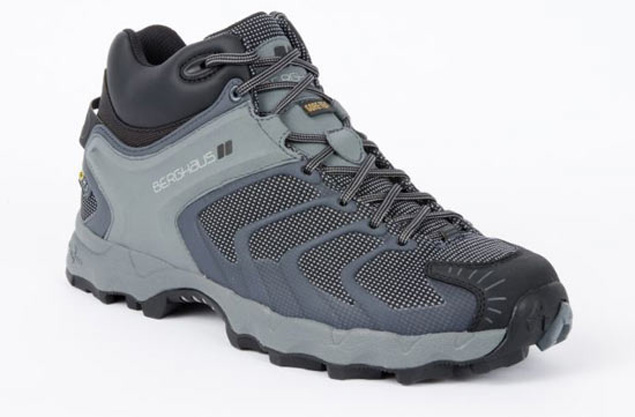
A good compromise, if you’re wary of shoes on the hill, is a
lightweight mid based on a trail running shoe. These are
psychologically reassuring and give some ankle protection as well as
being less prone to stone ingress. The higher cuff won’t actually add
much stability, that’s mostly down to the construction of the sole unit
and the heel cuff.
Finally some so-called ‘trail running shoes’, particularly from
traditional outdoor brands, are really walking shoes in disguise.
Brasher, for example. And Scarpa which has both a ‘proper’ running shoe
in its range and what it calls a ‘runnable’ shoe, which is really
better suited to lightweight walking.
Waterproof Or Not
Many trail running shoes give you the option of a
waterproof
liner. These work well in damp UK winter conditons, but may be overly
hot in summer weather and slow drying when they do get wet.
Alternatively, the Berghaus
Phobic range and Hi-Tec shoes which use their excellent Ion Mask
water-repellent
treatment will shrug off water but still remain breathable and dry fast
into the bargain.

Fell Shoes
Think of fell-running as off piste trail-running and you
won’t
go far wrong. Fell shoes need to be able to cope with breakneck
descents on open fells away from the paths, where stability and grip
count for more than comfort and cushioning.
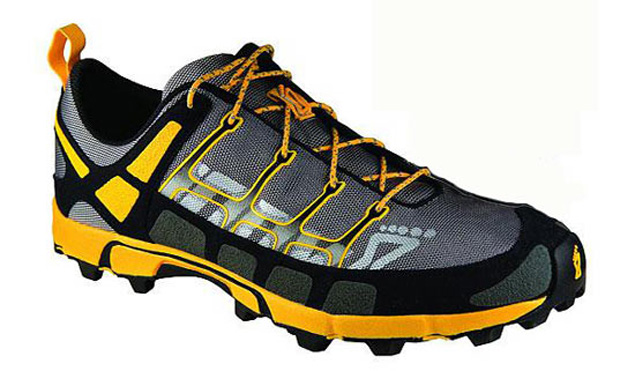
Because of this, traditional fell shoes have minimal sole cushioning,
so your foot is as close to the ground as possible for optimum balance,
a glove-like fit to avoid foot slippage inside the shoe and fierce,
aggressive outsole cleats with softish rubber for maximum grip on
grassy and rocky terrain.
All those features make them fantastic for their purpose, but a tad
minimalist for all-round trail running and walking use.

